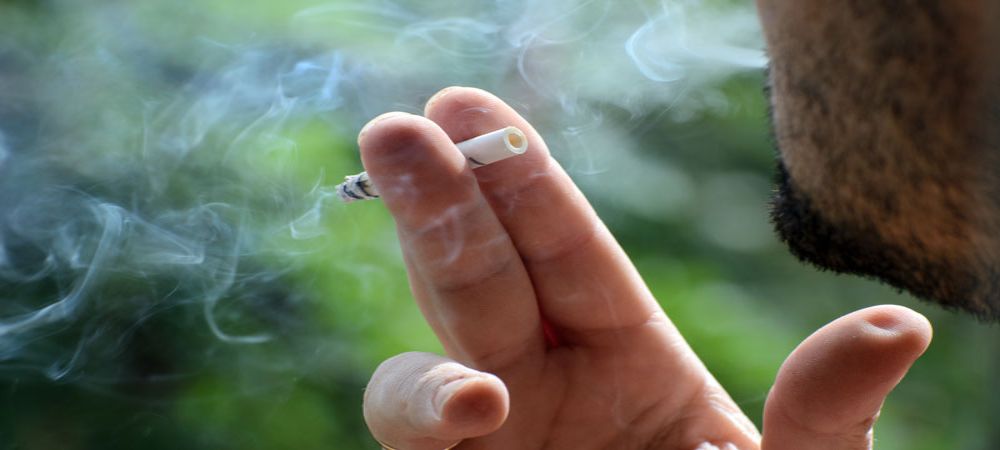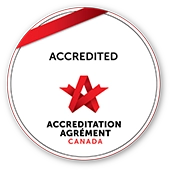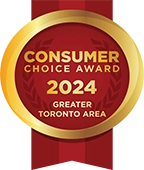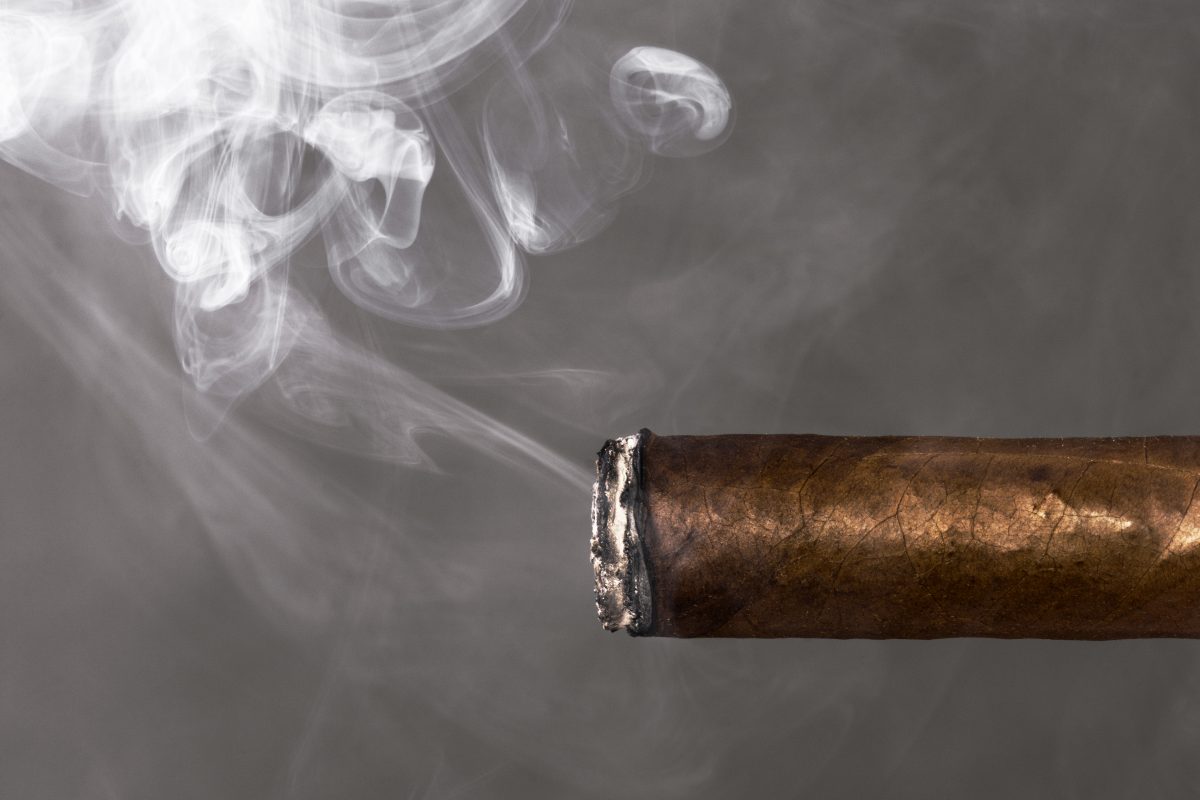Huffing Addiction
Huffing addiction is also called inhalant addiction. Inhalants can produce similar effects to that of drinking alcoholic beverages. It is abused commonly by teenagers. It is because it is easy to get a hold of inhalants. They may even be found just around the house.
Many individuals would admit to using inhalants to get high. However, statistics show that inhalant abuse is not as widespread in comparison with other drugs. Nevertheless, huffing addiction is still a serious matter. With teens being the usual users, huffing addiction may lead to the use of illicit substances.
What is Huffing?
Huffing is a specific type of substance abuse that differs slightly from other drug use methods and abuse. It involves inhaling the fumes of common household substances in a bid to get high. It is also referred to as inhalant abuse or sniffing.
Regardless of the name, however, the entire purpose of the process is to get a euphoric feeling afterwards. This feeling often includes visions and hallucinations. But, asides from addiction and dependency, one of the significant issues associated with this type of abuse is that it is hazardous.
Usually, people who practice inhalant abuse without necessarily worrying about how to kick off huffing addiction use paints to get the job done. This is especially common when they are unable to get the drugs they actually want. As such, they settle for the toxic chemicals in these household substances to get an intense high.
[activecampaign form=1]
What are the Main Variations of Huffing?

Now, huffing is indeed a substance abuse method that specifically targets the most common household substances capable of producing a high. 2020 statistics show that 3%-5% of Canadian adolescents have tried huffing at some point in their lives.
However, you should know that it is still a generalized term for the method of abuse. There are other ways to describe the process, some of which include:
- Huffing – In this specific context, the user puts the addictive substance onto a piece of cloth and presses it against their mouth. They usually breathe it in through that avenue as deeply as they can so that they can get the chemicals into their system.
- Snorting or sniffing – To snort or sniff, a person puts his nose directly to the container and draws deep breaths.
- Bagging – This method involves putting the inhalant into a bag and then breathing it in deeply through the bag opening. Imagine a scenario where a person is given a small brown bag while hyperventilating to calm down. However, instead of an empty bag, there are household substances with powerful chemicals.
- Spraying – Just as the name implies, this method involves spraying the contents of an inhalant directly into the mouth or nose. This is one of the most direct ways to get high off inhalants because it goes beyond inhaling fumes. Instead, it could put the substance directly in your body. For that reason, this method is incredibly dangerous and requires that you immediately learn how to kick huffing addiction.
Having said all that, let’s find out – what is huffing addiction?
Huffing Addiction: What Is It?
People who abuse inhalants are prone to developing a psychological and physical dependence on it. Teens as young as eight graders are said to use inhalants. About 15% of the North American teen population admit to using inhalants to get high. It’s about the same number as those who use marijuana.
If you or someone you know abuse inhalants, they can develop an addiction to it. Once you aren’t able to control your use of inhalants, then you have an addiction. Being addicted to something is when you continue to use it or do the act even if you are already experiencing negative consequences.
Huffing addiction may not be as prevalent as other kinds of addictions, but it is challenging to treat it. It is because inhalants are so readily available both at home as well as in stores. Quitting on your own may be more complicated than you think. If you want to, you will always find a way to acquire inhalants so that you can get your fix.
What are the Signs of Huffing Addiction?
If you’re not the one huffing or looking for how to treat a huffing addiction, you might not easily pick up the signs that your loved one might have a huffing problem.
This is largely because inhalant abusers tend to indulge in secret, away from loved ones and family members that could judge them. However, it doesn’t exactly mean that it is impossible to figure out.
At the very least, you might notice that:
- They often smell like solvents and other chemical substances.
- There are bags of gasses constantly lying around here and there in the house.
- They sometimes get sloppy and leave paint behind on their faces.
- They leave behind heaps of compressed air cans and canisters.
You need to note that you mustn’t jump to a conclusion when you notice these signs. After observing them, the best thing to do would be to have a proper conversation with your loved one. Instead of judging, ask honest questions sympathetically and make sure to keep calm if they eventually come out to you.
Knowing More About Inhalants
Inhalants are products that are both volatile and usually flammable. They easily vaporize when you place them at room temperature. When you use inhalants to get high, you will experience its mind-altering effects. However, it is only short-lived. It’s like getting drunk on alcoholic beverages.
When we talk about inhalants, these are the products that are made up of different chemicals. What makes them fit into this one category is how they are used which is through inhalation. Most of the inhalants have different street names such as hippie crack, huff, laughing gas, and whippets.
What Substances are Considered to be Inhalants?
With huffing addiction or inhalant addiction, it is when you misuse anesthetics, gases, and solvents that are usually found in the house. Inhalants can range from gasoline to cleaning products.
As for anesthetics, the usually abused ones are chloroform and nitrous oxide or “laughing gas.” It is something that most dentists use. Laughing gas is also found in whipped cream cans. Many people with huffing addiction get their fix from that. Let’s take a look at the different inhalant classes:
Solvents include the following:
- Nail polish remover
- Nail polish
- Glue
- Electronic contact cleaners
- Felt-tip marker fluid
- Correction fluids
- Lighter fluids
- Gasoline
- Dry-cleaning fluids
- And paint thinners
Aerosols include the following:
- Vegetable oil sprays
- Aerosol cleaning products for computers
- Deodorant spray
- Hair spray
- And spray paint
Gases include the following:
- Freon
- Nitrous oxide or laughing gas
- Chloroform
- Ether
- Whipped cream dispensers or whippets
- Propane tanks
- Butane lighters
Nitrites include the following:
- Liquid aroma
- Leather cleaner
- Room odorizer
- And video head cleaner
Related article: Aftercare Treatment | Addiction Recovery
What are the Effects of Huffing Addiction?
There are many ways that people abuse inhalants. The most common method is by huffing it. Huffing is done by soaking a towel or rag with the inhalant. It is then held up to one’s nose or mouth so that they can inhale the vapours. Others prefer inhaling the product directly from the container using their nose or mouth.
There are people with huffing addiction who use paper or plastic bags to inhale the addictive substances. Some even inhale the gas from the balloons. To intensify the effects of inhalants, some people with huffing addiction heat the substance before they inhale them.
Intoxication by inhalants is similar to getting drunk with alcoholic beverages. Some of the common effects are impaired motor function and judgment. However, unlike alcoholic beverages, those who use inhalants experience a temporary hallucination. Also, the results of huffing inhalants do not last long.
Some of the effects of huffing inhalants are:
- Slurred speech
- Loss of consciousness
- Lack of coordination
- Limited reflexes
- Dizziness
- Lightheadedness
- Inability to control one’s self
- Hallucinations
- Euphoria
- And excitability
Any way or manner of using inhalants apart from its primary function is known as inhalant abuse. It can lead to huffing addiction which can then cause various health consequences that can be serious and irreversible.
Huffing inhalants affect the central nervous system because it acts as a depressant. When you inhale a lot of the solvent, it may result in an overdose which can be fatal. You will first experience having hallucinations, nausea, and vomiting. Soon, you will lose consciousness.
When a fatal overdose happens, it is usually because of the heart failing, asphyxiation, or the inhalant addict stops breathing because of too much of the substance. Here are other long-term consequences of huffing addiction:
- Brain damage
- Delayed behavioural development
- Nerve damage
- Limb spasms
- Loss of coordination
- Damage to the bone marrow
- Hearing loss
- Kidney damage
- And liver damage
Treatments for Huffing Addiction
The primary step to take when if you have huffing addiction is to look for the best treatment for you. To treat huffing addiction, what is usually necessary is for you to attend an inpatient rehab program.
After you graduate from that, you would have to participate in outpatient rehab programs as well. Other things include behavioural therapies, support groups, and 12-step programs.
What is vital during the first step is for you to have an assessment of your huffing addiction by an addiction expert. It is in this way that the right treatment processes will be given to you. Each person with huffing addiction has a unique set of needs. Therefore, it is necessary to have a proper assessment so that you will have the treatments that will address your needs.
Detoxification for Huffing Addiction
The first phase in treating huffing addiction is detoxification. This process may be shorter or longer, depending on many factors. For example, what kind of inhalants were you using? How frequently did you inhale those substances? And were you using several substances? Chronic and long-term inhalant abusers would need a number of weeks to be able to detox fully.
The substances that huffing addicts inhale accumulate in the fatty tissues of the body. Specifically, they get stuck in the muscles, liver, heart, and brain. It is why people with huffing addiction and are long-time users will need to prepare for several weeks of detox. The period for detox will allow the substances in the fatty tissues to find its way out of your system. It will make the addiction treatment process relatively easier.
Preparing for Withdrawal Symptoms from Inhalants
There are people with huffing addiction who experience withdrawal symptoms when they stop huffing inhalants. How severe these withdrawal symptoms will depend on several factors. For example, what type of inhalants the person was abusing and the individual’s medical history. Also, his or her mental health has to be in consideration.
The best way to deal with the withdrawal symptoms would be to have a detox that is medically supervised. The first step to make this happen is to get yourself in an inpatient rehab centre. The expert healthcare providers will then be able to monitor you 24/7. Don’t feel stifled that this is the case. Know that it is necessary to ensure that you have the best care during a tough time like a detox.
There are both psychological and physical symptoms during the process of withdrawal from inhalants. Here are some of them so that you can prepare yourself for the detox, which may be a challenging time.
- Brief hallucinations
- Vomiting
- Nausea
- Hand tremors
- Insomnia
- Intense fatigue
- Irritability
- Depression
- Anxiety
The good news here is that most of the individuals who stop huffing inhalants do not suffer from symptoms of withdrawal. However, if you are a long-term inhalant abuser, then you may experience these symptoms after one to two days since the last time you abused inhalants.
For now, there are no medications that are designed specifically to help in alleviating the withdrawal symptoms of huffing addiction. Nevertheless, your doctor may be able to give you meds and supplements that can help you deal with the sleeplessness and nausea.
Inpatient Rehab for Huffing Addiction
With an inpatient rehab centre, you can benefit from not being able to access the inhalants at home or buy them in the store. The problematic part about huffing addiction is that the substances that you use are legal and therefore, can be purchased easily.
When you go through rehab for hugging addiction, know that it won’t have the same process as that of other types of addictions. The recommendation for people with huffing addiction who will go to rehab would be to undergo a physical exam first.
A physical exam is necessary so that the healthcare provider can know if you have any health problems brought about by your inhalant abuse. For example, there may be some abnormalities already in your kidney or liver. It is necessary to know these things so that you will be given proper care and treatment.
Apart from that, you may need an assessment for any mental health issues or co-occurring conditions. The development of mental disorders because of huffing addiction will require a more specific treatment plan. It is the reason why a proper and thorough assessment of your physical and mental state is necessary.
Ongoing Outpatient Rehab Program for Huffing Addiction
Ongoing programs for treatment is an essential element so that you won’t go back to your bad habits. For the outpatient rehab program, you will get the chance to join support groups and therapies. These tools are proven to be most effective for treating those with huffing addiction.
The social and psychological problems that come from having huffing addiction are something that cognitive behavioural therapy can address. CBT is a type of treatment for people who have addictions and who want to recover from them. The treatment can help recovering addicts to understand the reasons why their addiction started. Also, part of it is why and how substance abuse has become a significant problem in their lives.
While you’re in recovery for huffing addiction, you should be able to get as much support as you possibly can. If you do things on your own, especially when it comes to recovering from an addiction, it will be more difficult.
Your family, good friends, and your healthcare providers are your support groups. Apart from that, you also have your peers who are also going through similar ordeals in dealing with addiction. These support groups can help in motivating you to stay sober. You may also offer your support to those who are just starting in the process of recovery.
[activecampaign form=1]
Benefits of Kicking the Habit of Inhalant Abuse
When you quit abusing inhalants, you will get to enjoy a healthier body and an improvement in the relationships that have been suffering because of your addiction. Your focus in your work or school will also improve once you start addressing your huffing addiction. These are the significant benefits of quitting inhalant abuse. Let’s take a look at the other benefits that you can get.
Reduces the Health Risks
The first benefit that you will get from quitting inhalant abuse is the improvement in your health. The substances that you use to feed your huffing addiction are hazardous to your body, especially the brain. If you have been abusing inhalants, here are some of the effects that you may experience:
- Slurred speech
- Loss of memory
- Inability to focus
- Loss of hearing
- Headaches
- Tingling or numbness in your fingers and toes
- Poor motor skills and coordination in movement
- Disorientation and higher risks of getting into accidents
- Burns because of exposure to flammable inhalants
Furthermore, people who have huffing addiction are at a higher risk of contracting contagious diseases because of their risky behaviour. When they are under the influence of the substances, they may do things that are irresponsible and risky. Here are some of them:
- Sinusitis, asthma, and bronchitis
- Sexually transmitted diseases
- HIV and AIDS
- Tuberculosis
- Anxiety and depression
Inhalant abusers also have the risk of dying because of their substance use. Such deaths can happen even if you only use small doses of inhalants. There are even cases where it was the person’s first time to use inhalants to get high. It is called “sudden sniffing death.” It can happen because of the following:
- Suffocation
- Respiratory depression
- Heart arrhythmias
- And choking on vomit
If the inhalant abuser is a pregnant woman, then the fetus is at risk of getting toluene embryopathy. It is a condition that is like fetal alcohol syndrome. Such conditions can lead to several complications to the unborn child.
Increases Your Ability to Focus
The major side effects of abusing inhalants include nausea, dizziness, and headaches. Such side effects will make it difficult for you to focus on your tasks at work or at school. When you have been abusing inhalants for a long time, you will be at risk of suffering from brain damage. It is because of the brain not getting a sufficient amount of oxygen.
When you quit abusing inhalants, your brain will start to get the oxygen that it needs. That means that your brain’s oxygen levels will improve. You will enjoy a boost in your productivity and ability to focus. You will be able to do your tasks at work or at school better.
Lessens the Risk of Other Addiction
When you regularly abuse inhalants, you will eventually develop a dependence and addiction to it. What happens is that you may get into using other substances to get high. It is because huffing inhalants only give short-term pleasurable feelings.
As you spiral down to the addiction, you would want to experience more intense highs. Therefore, you will look for other substances that can make you feel good. By deciding to quit your habit of abusing inhalants, you will lessen the risk of developing other addictions.
Improvement in Relationships
When you’re addicted to inhalants or any substance for that matter, your relationships will suffer. Your loved ones will be worrying about you and your health. You won’t be spending time with your family and friends because your priority is looking for your next fix.
If you quit inhalant abuse, you can start to rebuild the relationships that you have. It’s never too late to address your huffing addiction. The sooner that you can begin treatment for it, then the sooner it is that you can start repairing the damage that the addiction caused.
What are the Tips for Quitting Inhalant Abuse?
Quitting huffing addiction without any help or support is going to be challenging. As much as you can, do ask for assistance from your family, friends, and addiction treatment experts. While preparing for your huffing addiction recovery, here are a number of tips for quitting inhalant abuse.
Talk to an Expert
One of the first steps to take when dealing with your huffing addiction is to talk to an addiction treatment expert. You can first approach your healthcare provider to ask for a recommendation on the best drug rehab centre. You may also search the web for addiction treatment facilities near you.
There are also support groups such as Narcotics Anonymous where you can get encouragement from individuals who are recovering from their drug addiction as well. Going to rehab, either for inpatient or outpatient programs will greatly help you in your recovery. Joining support groups will also provide you with the support network that you’ll need during treatment from inhalant abuse.
Stay Away from Triggers
Once you decide to kick the bad habits like abusing inhalants, then you should be ready to cut ties with people who are still using such substances. You may think that those people are your friends, but you have to think about your well-being first. If staying in touch with them means that you’ll be at risk of huffing inhalants again, then you’re better off without those friends.
Also, try to avoid places such as stores where you usually buy the inhalants that you abuse. Clean up your house and throw out the things that you use for huffing substances. If you can’t do this alone, call a family member or a trusted friend who can help you. By having someone by your side as you make this big and important step, this task will be less stressful.
Look for a Treatment Facility
You may want to go to an addiction treatment facility that is away from your hometown. It may help you to be in a new environment. While you may think that you need to be close to home, it may not be the best for you while you are recovering from huffing addiction.
A rehab centre that is far from the familiar places will help you by keeping you away from where you usually get inhalants and other substances. The point of being away from your hometown is so that you can focus on your treatment.
Confront Your Reasons for Abusing Inhalants
It is crucial that you fully confront yourself as to why you abuse inhalants in the first place. What you have to keep in mind is that your recovery is not merely quitting inhalant abuse. It is also changing your mindset about your drug use. It is a vital process where you can have the opportunity to look deeply into the root causes of your addiction.
Takeaway
Huffing addiction is a serious concern, especially when most of the users are teenagers. If you abuse inhalants, it is never too late to quit the habit.
You must make the decision now so that you will receive adequate treatment, care, and support. If you’re ready to break free from huffing addiction, you can always contact our best addiction treatment experts. Get in touch with Addiction Rehab today!
Related article: 7 Tips to Help You Get Through Addiction Recovery









